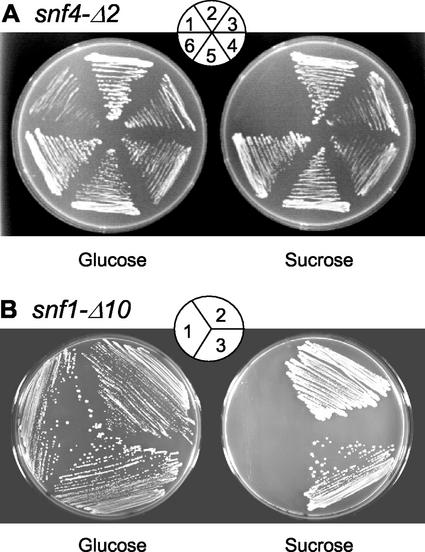Figure 4.
Complementation of yeast snf4-Δ2 and snf1-Δ10 mutants by LeSNF4 and LeSNF1.A, The snf4-Δ2 mutant was transformed with the empty vector (sector 1), with yeast SNF4 (sector 3), tomato LeSNF4 (sector 4), tomato LeSNF1 (sector 5), or yeast SNF1 (sector 6). Wild-type yeast transformed with the empty vector is shown in sector 2. Transformed strains containing gene inserts were initially identified on selective synthetic complete (SC) medium containing Suc (except those containing empty vector, which were grown on Glc), then were grown on selective SC plates with 2% (w/v) Glc (left) or Suc (right) for 10 d at 29°C. B, The snf1-Δ10 mutant was transformed with the empty vector (sector 1) or with tomato LeSNF1 (sector 2) or yeast SNF1 (sector 3). Transformed strains were selected as above, then were grown on selective SC plates with 2% (w/v) Glc (left) or Suc (right) for 3 d at 29°C. No colonies were recovered on Suc plates after transformation of snf1-Δ10 with vectors containing either LeSNF4 or SNF4 (data not shown). For both A and B, results similar to those shown on Suc medium were obtained when strains were grown on medium containing 2% (w/v) each of Gal, glycerol, and ethanol plus 0.05% (w/v) Glc (data not shown).

